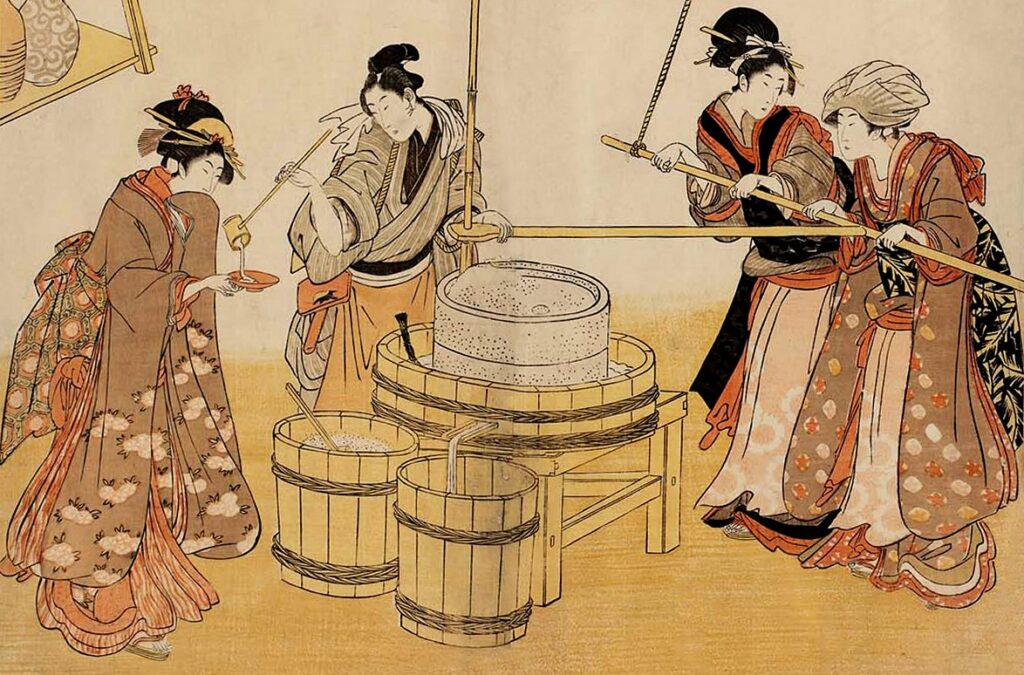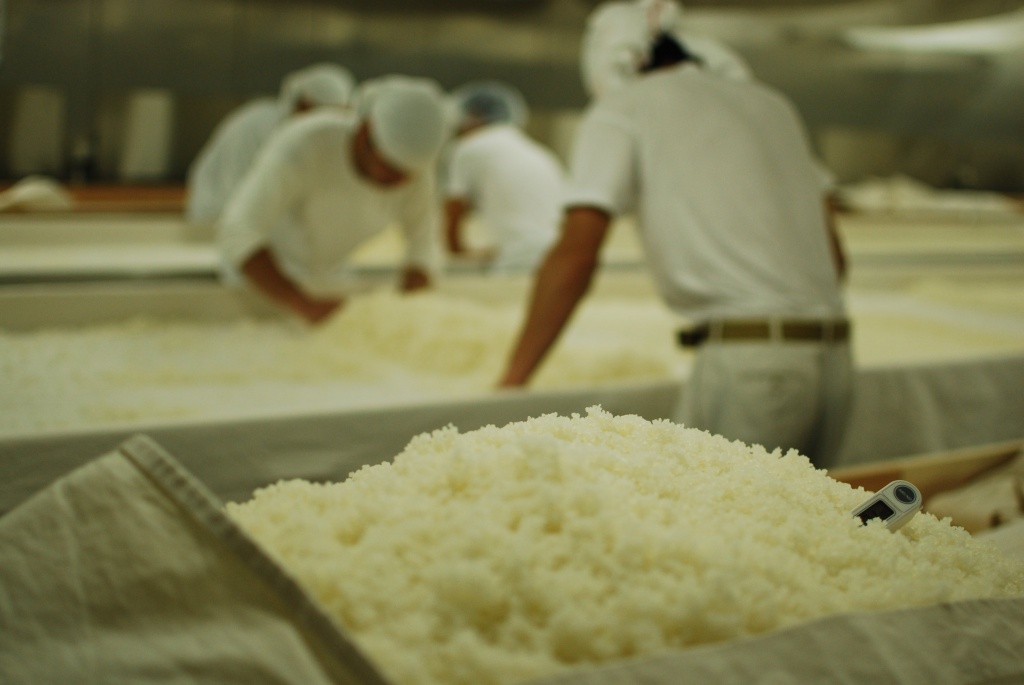For centuries, sake has been a staple in Japanese culture, known for its delicate and complex flavor profile. Whether you’re a seasoned connoisseur or a curious beginner, exploring the world of sake is an adventure that can lead to new discoveries and sensations. In this article, we’ll take a deep dive into the history of sake, learn how to choose the right sake for you, and explore how to taste and appreciate the unique characteristics of this beloved beverage. So grab a cup and join us on this journey through the rich and fascinating world of sake.
Table of Contents
When Did Sake Appear?
Sake has been made for more than 2,000 years. Around the 13th and 16th centuries the traditional approach to sake production took shape, and many of the techniques from that time have survived to the present day. The peak of sake development in Japan was in the 20th century. The country began to actively develop and increase its production capacity, which influenced both the quantity and quality of sake.

In today’s Japan, the image of sake is more traditional and it is losing popularity. The main trend there now is shoyu. It is rice moonshine: sake is distilled through a moonshiner to produce shoyu. Its strength is 25 to 46%. But in Europe, sake is a rising star in the alcohol industry. It is drunk at home, in bars, pure, and in cocktails.
What is sake made from?
It is relatively simple: it is a drink made from rice, water, and koji. All of this is transformed into sake by fermentation. While the organoleptic properties of sake are closer to wine, the production method is similar to beer. The strength of sake typically ranges from 13-16%, but first things first.
Japanese round rice is used to make sake. The fermentation process requires starch, which is found in the center of the grain. The top layer of the rice grain, the shell, is removed: it is mostly proteins, fats, iron, and other elements which can greatly influence the taste of the sake. In industrial production the grinding process “removes” from 25 to 77% of the grain. The less of the shell remains after grinding, the “cleaner” the aroma and flavor of the sake will be and the higher the price will be.
To start the fermentation process, after grinding, washing, soaking, and steaming, koji and then yeast are added to the rice. This results in a double, parallel fermentation process: the koji converts the starch from the rice into simple sugars, which the yeast then converts into alcohol.
According to Japanese norms, the fermentation process may last from 20 to 40 days. At the end of the fermentation process, the strain is squeezed to separate the liquid and the koji rice. The crude sake is then filtered, pasteurized, aged, pasteurized, and bottled.
The aging period is usually short, with a maximum of 4-6 months in stainless steel vats. Sometimes sake is also aged in sugi, a Japanese cryptomeria tree, in barrels. Then the drink acquires woody notes.
The master responsible for the production process, who determines what kind of spirit it will be, is called a toji.
How Long Does Sake Keep?
Sake has a rather short shelf life, and in Japan they say you have to drink it within one year of bottling. Officially, sake can be stored for three to five years. At the same time, unlike wine, sake rarely develops in bottles, as there is no interaction with oxygen – the corks are mostly metal.
Storage has a tremendous influence on the preservation of the taste of the drink – much more so than wine or other beverages. Sake bottles should be stored in a refrigerator, wine cabinet or at room temperature on a shelf, upright. It is extremely important that the bottles are not exposed to direct sunlight or even artificial light. Otherwise saké may spoil – then it will have a characteristic musty and bitter taste and change color. So always pay attention to how sake is kept in restaurants and stores where you came to buy it.
Open sake can’t be stored for more than a month and after that its taste and aroma will start to change not for the better.
What kind of sake are there?
Once you know the basic parameters, you can start trying sake. To do this, you need to figure out which one to buy. The main parameters are the pasteurization method, the level of filtration, the length of time it is aged and the method of pressing.
- Unpasteurized sake – it has a brighter, fresher and more fruity taste compared to double pasteurized sake. Another option is sake pasteurized only once after aging.
- Unfiltered sake is quite rare because its color is often discouraged, but its taste is interesting. Slightly more common is sake with sediment, which is a coarsely filtered sake. It looks like a brew, but in combination with steak, it is very impressive.
It is quite rare to find an aged version of a sake, the kosya. It is aged for at least 2 years at a low temperature. But not every saké has such an ageing potential.
There is also sparkling sake. As a rule the taste is more fruity or creamy and the alcohol content is lower. This kind of sake is most popular with the younger generation both in Japan and abroad.
There are several different types of sake, which can be broadly categorized into three main groups:
- Futsu-shu: This is the most common type of sake and is generally considered an everyday drink. It is made with a blend of different types of rice and can be brewed quickly and inexpensively.
- Ginjo-shu: This type of sake is made with a higher quality of rice and brewed at cooler temperatures. It has a light, fruity flavor and is often considered more refined than Futsu-shu.
- Daiginjo-shu: This is the highest quality of sake and is made with the most carefully selected rice. It is brewed at even cooler temperatures than Ginjo-shu and has a delicate, complex flavor.
Other types of sake include Junmai-shu (made without added alcohol), Honjozo-shu (made with a small amount of distilled alcohol), and Nigori (a cloudy, unfiltered sake). Within each of these categories, there can be further variations based on the rice polishing ratio and brewing techniques.
How does the degree of polish affect the taste of sake?
There is an official statutory classification of sake in Japan. It is based on the degree of polish of the rice. Rice can be table rice (no grinding requirements), basic premium (rice residue after grinding is 70% or less), premium (rice residue after grinding is 60% or less), and super-premium (rice residue after grinding is 50% or less).

This directly affects the taste: inexpensive saké, which is made from rice with 70% grain residue, is ricey, bright and full-bodied, while super-premium sake is refined, fruity and light. Often the more expensive and premium sake, the higher its strength. Producers preserve the body of the drink at the expense of the alcohol.
For table sake, alcohol, sugar and amino acids are allowed to be added – it is usually drunk in the most budget-friendly establishments and used in cooking.
What does sake taste like and how do you taste it?
It’s impossible to describe the taste of sake because it’s too varied. I’d rather tell you how to taste it. As with wine, there are three basic steps: evaluating appearance, aroma, and taste.
Color ranges from colorless to rich and from clear to cloudy. The consistency is also externally distinguishable: it may be watery, or it may be oily and viscous.
As a rule, the aroma of sake is complex and diverse: some tastes of exotic fruits or mushrooms and some tastes of butter or caramel. The range of flavors is very large, but all of them can be classified according to the scale of saturation and complexity and distinguish the main and additional flavors.
Taste, like flavor, can come in a variety of levels. Another scale of dryness, sweetness and acidity is added. Taste and flavor are sometimes not particularly related, and this creates surprises.
Should I drink sake cold or warm?
Everything is simpler than it seems: sake is heated to smooth out “sharp corners” in taste and this is mostly done with inexpensive sake. There are also intermediate varieties – those that can be drunk both warm (when it’s cold) and cold (when it’s hot). Expensive types of sake are drunk cold because they have a delicate, subtle aroma and flavor, and heating them up can deprive the drink of these benefits.
For cold sake, the best glassware is white wine glasses. Warm sake is served in special dishes, choco and tokkuri, which are small ceramic pots and jugs for filling them.

What to drink sake with?
Sake is a perfect accompaniment to gastronomy. Of course, it is best paired with Japanese dishes, but it also makes an excellent pairing with the cuisines of other Asian countries and even Europe. Sake is especially good with raw fish and seafood, especially oysters. And in general sake is not afraid of experiments, so even pizza and tom-yam can be a good match.
How To Taste Sake?
Tasting sake is similar to tasting wine and involves using your senses to evaluate the sake’s aroma, flavor, and texture. Here are the steps to taste sake:
- Choose the right glass: Use a small wine glass or a specialized sake cup, called a choko, to enjoy the aroma and flavor of the sake.
- Pour the sake: Pour a small amount of sake into your glass, filling it about one-third to one-half full.
- Observe the appearance: Hold the glass up to a light source and observe the sake’s color, clarity, and viscosity.
- Smell the aroma: Gently swirl the sake in the glass to release its aroma, then bring the glass to your nose and inhale deeply. Take note of the sake’s aroma, which can range from fruity to floral to earthy.
- Taste the sake: Take a small sip of the sake and let it sit on your tongue for a few seconds before swallowing. Take note of the sake’s flavor, which can be sweet, dry, or savory.
- Evaluate the texture: Observe the sake’s mouthfeel, which can be light, smooth, or rich. Pay attention to the aftertaste, which can be lingering or short-lived.
- Repeat the process: Taste the sake again and pay attention to any new flavors or aromas that emerge as the sake opens up.
Remember, sake is meant to be enjoyed in moderation, so take your time and savor each sip. Additionally, it’s important to drink responsibly and never drink and drive.
How to choose sake and why are the bottles so small?
Choosing sake on your own without knowing the Japanese language is not an easy task. If you don’t have a sommelier who can help you, the first thing to do is to make sure that the sake is stored correctly.
Sake is usually bottled in 0.3-liter bottles: it is quite an expensive drink, and this bottle size is a way to make the price less stingy. Decide on the type of sake you want to buy: classic or not. If classic, choose clear and be guided by the price factor: the lower it is, the more ricey the taste will be, the higher it will be, the more delicate and fruity.
Are there any sake cocktails?
There are types of sake that are perfectly suited to making cocktails. Also, sake is not a strong drink, allowing you to make low-ABV style cocktails, which is trending in the bar industry right now.
The biggest barrier to using sake as a base for cocktails is its high cost. That’s why sake-based cocktails are more common in premium restaurants and bars, where bar managers are constantly on the lookout for new flavors and guests are open to experimentation.



